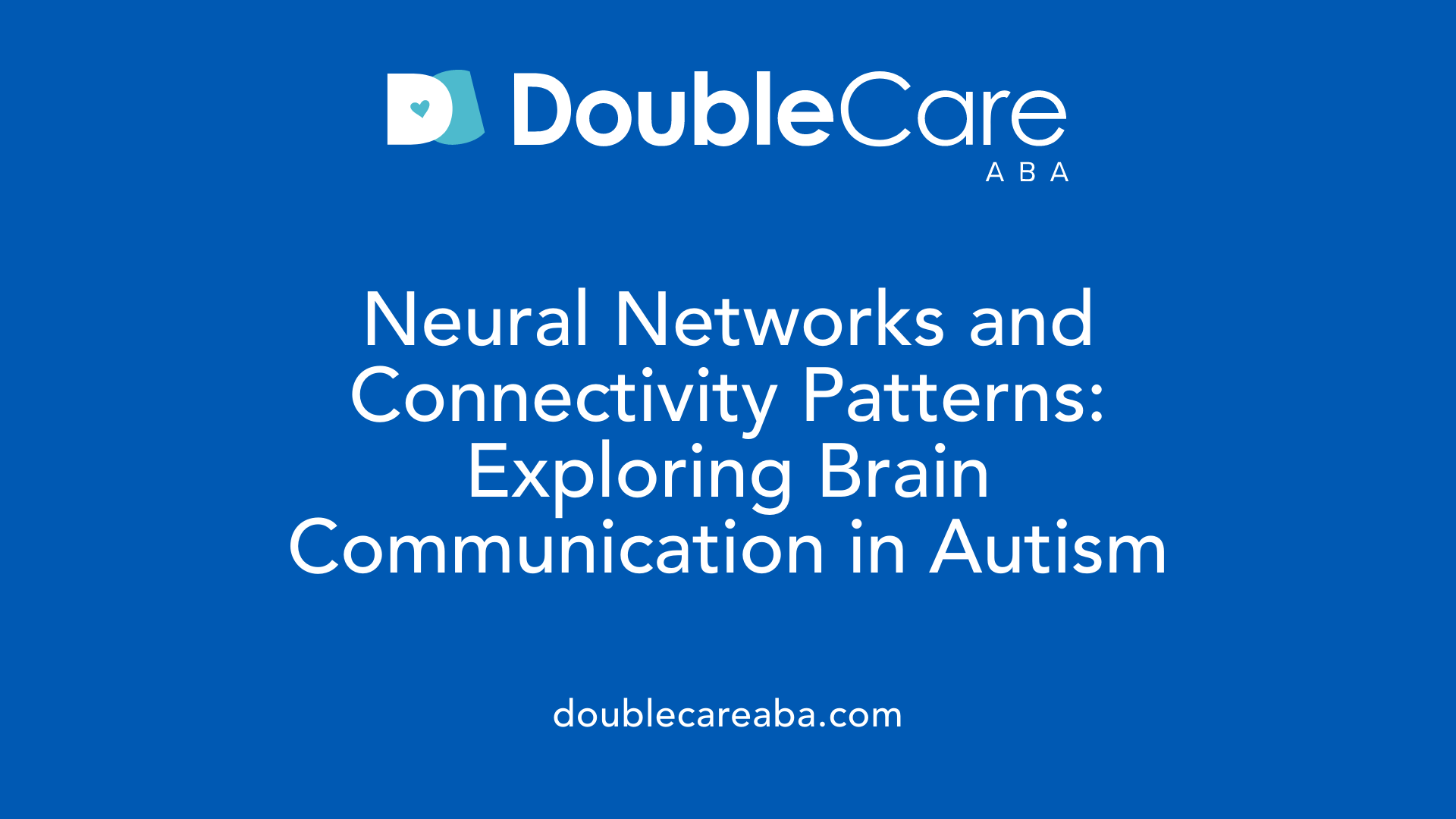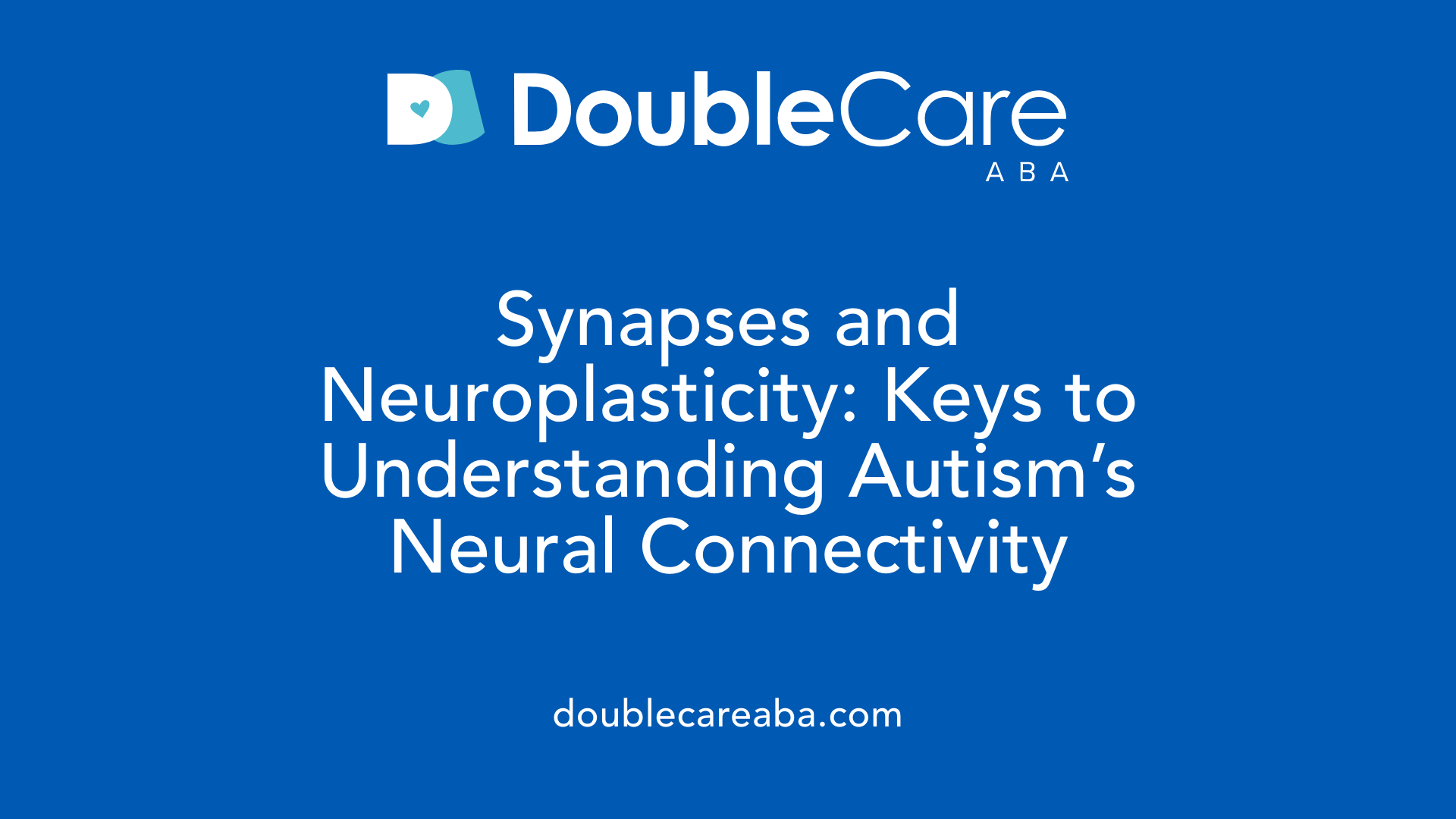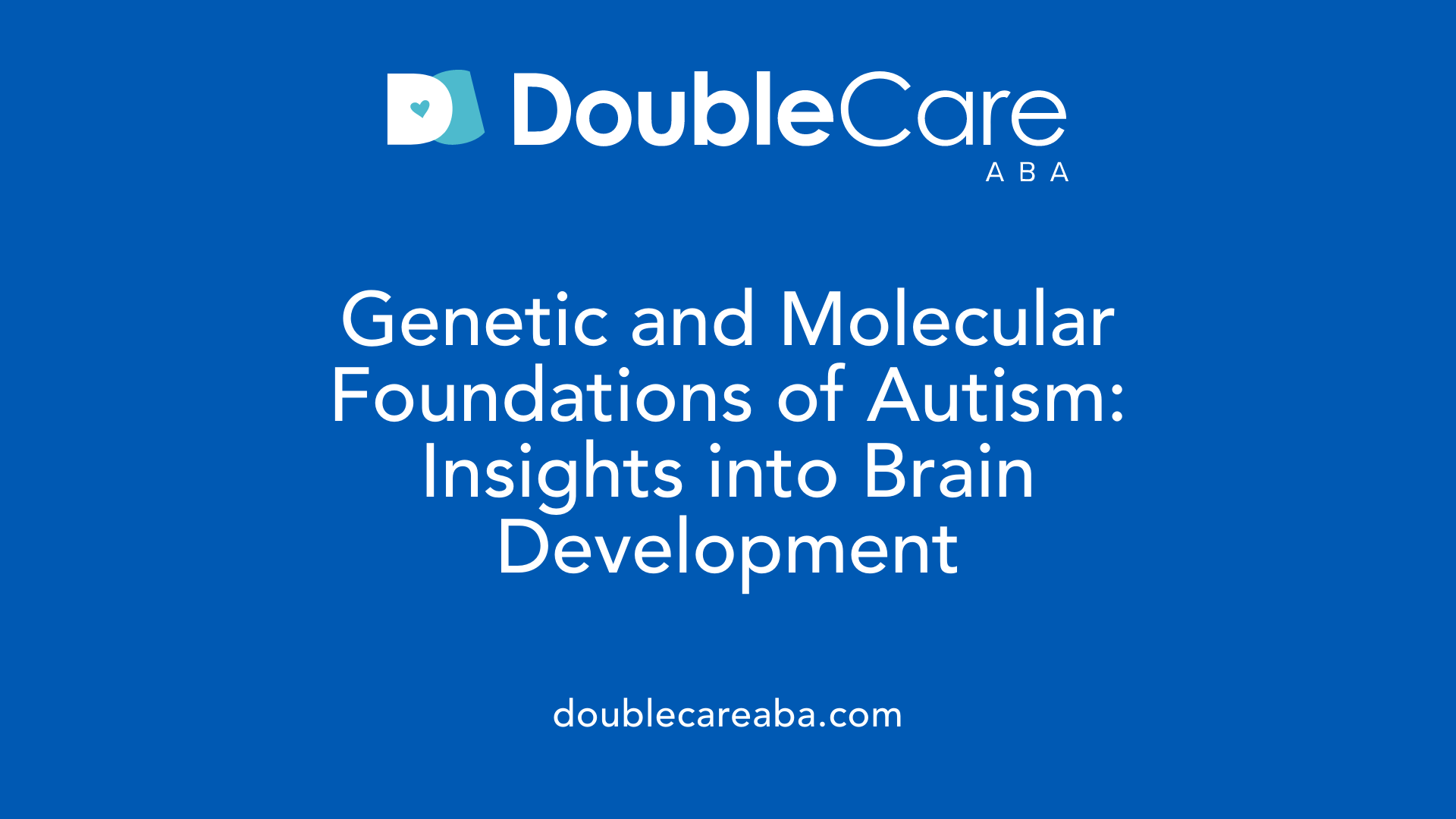Understanding the Complex Brain Differences in Autism
Autism Spectrum Disorder (ASD) is fundamentally a variation in brain development and functioning, affecting how individuals perceive, process, and respond to the world. Recent scientific advances have shed light on the neurobiological underpinnings of autism, revealing differences in brain size, structure, connectivity, and neural activity. These insights not only deepen our understanding of autism but also challenge traditional views, positioning it as a neurodevelopmental difference rather than a disorder. This article explores how autistic brains work, examining structural, functional, and molecular features that shape the unique experiences and behaviors of autistic individuals.
Structural Brain Differences in Autism
Are autistic brains bigger?
Autistic brains tend to be larger than those of neurotypical individuals, especially during early childhood. Research indicates a brain size increase of about 5-10% between 18 months and 4 years of age. This phenomenon is often referred to as early brain overgrowth and predominantly affects areas like the frontal cortex, temporal regions, and the amygdala.
This accelerated growth phase results in enlarged gray and white matter in these key areas. Some studies also suggest that, in certain subgroups, this larger brain size can persist into adolescence and adulthood. This challenges earlier beliefs that brain size naturally normalizes over time in autistic individuals.
Interestingly, despite the enlarged brain volume, findings show a paradoxical decrease in synaptic density—meaning there are fewer synapses in autistic brains compared to neurotypical brains. Synapses are critical for neuron communication, so their lower count affects brain connectivity and function.
The relationship between brain size and function in autism is complex. Many autistic individuals have brains that are structurally larger but might process information differently due to altered synapse counts and connectivity patterns. This disparity underpins some of the behavioral and cognitive differences observed in autism.
Overall, enlarged brain size is characteristic during early development in many autistic individuals. However, size alone does not directly predict functionality. The variations in brain structure and neural wiring play crucial roles in shaping the autism spectrum’s diverse presentations.
Neuroanatomical abnormalities in autism
Studies utilizing advanced imaging techniques, such as MRI, have uncovered various neuroanatomical differences in autistic brains. These include alterations in brain regions responsible for language, social behavior, and sensory processing.
One consistent finding is a difference in cortical organization, with some regions exhibiting atypical thickness or abnormal folding patterns. For example, increased folding in the parietal and temporal lobes can influence neuronal network connectivity—affecting how different parts of the brain communicate.
The amygdala, involved in emotional processing, often shows abnormal size; it may be enlarged during early childhood, correlating with the severity of social deficits, then shrink or reduce in cell number in later years.
Additionally, the cerebellum, which contributes to movement coordination and cognitive functions, tends to show reduced volume. These changes may impact the integration of sensory input and motor responses.
Disruptions in cortical layering and microstructure are also evident, pointing to differences in neuronal proliferation and migration during development. These neuroanatomical variances highlight the atypical brain development pathways in autism.
Regional brain volume changes
Different regions in autism exhibit both increases and decreases in volume over developmental stages.
Early in childhood, regions like the hippocampus, involved in memory formation, tend to be enlarged. Conversely, the corpus callosum, which facilitates interhemispheric communication, often shows reduced volume. Such differences can impact cognitive and emotional processing.
Throughout adolescence and adulthood, some brain regions undergo normalization or even reduction in size, possibly reflecting neural pruning or other developmental processes.
Other notable changes include increased cortical thickness in certain areas, like the prefrontal cortex, which affects executive functions like planning and flexibility. The deep structures, such as the amygdala and hippocampus, continue to develop differently, affecting social and emotional behaviors.
Changes in white matter pathways, including the corpus callosum, alter how regions connect, influencing sensory integration and complex cognition.
| Brain Region | Typical Changes in Autism | Developmental Implication |
|---|---|---|
| Frontal Cortex | Enlarged in early development | Impacting executive functions |
| Amygdala | Enlarged early, reduces over time | Affects emotional regulation |
| Cerebellum | Smaller volume | Influences movement and cognition |
| Corpus Callosum | Smaller size | Alters interhemispheric communication |
| Hippocampus | Larger in early childhood | Memory processing and learning |
Understanding these neuroanatomical differences helps in identifying biological subtypes of autism and tailoring interventions that support individual needs.
Neuroanatomical Variations and Developmental Trajectories
What is the significance of brain overgrowth in early childhood for autism?
Research shows that children who develop autism often experience a period of rapid brain growth during the first two years of life. This overgrowth involves an increase in the size of key brain regions, such as the prefrontal cortex, hippocampus, amygdala, and other neuroanatomical structures. This early expansion might underlie some of the developmental and behavioral features seen in autism, including differences in social communication and motor skills.
As this growth phase occurs, it can lead to discrepancies in brain size compared to neurotypical children. Typically, this rapid development is followed by a normalization or even a reduction in brain size as the individual grows older. These early overgrowth patterns may contribute to the atypical neural circuitry that influences how autistic brains process information.
How do regional volumetric changes affect brain function in autism?
Autistic brains exhibit specific changes in different regions, impacting overall brain function. For example, the amygdala, which is involved in emotion processing, is often larger in young children with autism, correlating with social and emotional difficulties. However, this volume tends to decrease or normalize with age.
Other areas such as the cerebellum, responsible for movement coordination and cognitive functions, tend to show decreased grey matter volume. The cortex may also display variations in thickness, especially in the prefrontal and temporal lobes, which are critical for executive functions, language, and social cognition.
Changes in white matter, part of the brain's wiring that connects different regions, are also common. These structural differences can hinder efficient neural communication, resulting in the characteristic challenges seen in autism.
What are the developmental patterns observed across the lifespan?
The developmental trajectory of brain changes in autism is distinct from typical development. Early overgrowth is frequently observed, especially in the first two years, followed by a plateau or reduction in growth rates during childhood. As individuals age, certain regions—like the amygdala—may shrink or show decreased cell density, possibly affecting social and emotional functioning.
Furthermore, connectivity changes evolve during development. There tends to be hyperconnectivity in local circuits and hypoconnectivity across distant brain regions, influencing processing speed and integration of information.
The ongoing brain development continues into the mid-20s, with some new features emerging as social and cognitive skills solidify. These dynamic changes highlight the neuroplasticity of the autistic brain, emphasizing the importance of early intervention and lifelong support.
| Aspect | Typical Development | Autism Spectrum Development | Impact on Functionality |
|---|---|---|---|
| Brain growth in early years | Gradual increase, stabilization, and pruning of connections | Rapid early overgrowth followed by normalization or reduction | Affects social, cognitive, and motor skills development |
| Regional volume changes | Stable or predictable increases in specific regions | Region-specific enlargements or reductions | Influences emotional regulation, language, and social skills |
| Connectivity patterns | Increasing focus and efficiency over time | Early hyperconnectivity with later divergence | Alters processing speed, sensory integration, and social perception |
| Lifespan changes | Stabilizes around adulthood | Continued structural and functional adaptation | Emphasizes ongoing developmental complexity |
How do genetic and environmental factors influence brain development in autism?
Genetics significantly shape the developmental pathways of autism. Variations in numerous genes related to neuroinflammation, immune response, synaptic function, and neural growth influence brain overgrowth and regional development. Environmental factors during pregnancy and early life, such as exposure to neurotoxic chemicals, can also interfere with typical brain maturation.
Research indicates that gene-environment interactions contribute to the complex neuroanatomical patterns observed in autism. For example, inflammation-related gene upregulation can promote abnormal neural proliferation, while neuroprotective genes may mitigate some developmental issues. Understanding these influences allows for more targeted early interventions and personalized support strategies.
What is known about the relationship between early brain changes and later behavioral outcomes?
Early brain overgrowth and subsequent neuroanatomical alterations often associate with the severity of autistic traits. Children with more pronounced early rapid growth may experience greater challenges in social communication and increased repetitive behaviors.
However, neurodevelopmental trajectories are highly individualized. Some children demonstrate typical brain growth patterns and minimal impairments, while others show complex developmental courses. Importantly, plasticity in the autistic brain offers opportunities for intervention, enabling adaptive rewiring and functional improvements over time.
This understanding underscores the importance of early diagnosis and intervention to harness neuroplasticity and optimize life-long outcomes for autistic individuals.
Connectivity and Neural Networks in Autism

How does autism affect day-to-day function?
Autism can significantly influence daily life through various cognitive and sensory challenges. Many autistic individuals struggle with executive functions like planning, organizing, and shifting between tasks. This can make routines such as personal hygiene, meal preparation, and time management difficult.
Sensory processing issues are also common. Some people may be hypersensitive to sounds, lights, or textures, leading to discomfort or overload in typical environments like busy streets or noisy workplaces. Others might be hyposensitive, seeking intense sensory experiences or showing indifference to stimuli.
Behavioral regulation can be affected, impacting how individuals respond to social situations or unexpected changes. Such difficulties may result in emotional outbursts or withdrawal as coping mechanisms.
Support strategies like using visual schedules, creating predictable routines, and modifying environments with noise-canceling headphones or sensory-friendly spaces can enhance daily functioning.
By understanding these differences, caregivers and professionals can tailor support to help autistic individuals navigate their routines more comfortably, promoting better independence and quality of life.
What are neural circuitry and connectivity patterns in autism?
Autism involves distinct patterns of brain wiring, affecting how regions communicate internally. Neuroimaging studies reveal that autistic brains often show a mix of increased and decreased connectivity across different networks.
One prominent pattern observed is hyperconnectivity, where multiple brain areas, especially those involved in sensory processing and visual recognition, are unusually strongly linked. This hyperconnectivity might contribute to heightened perception and sensitivities but can also lead to information overload.
Conversely, hypoconnectivity appears in networks related to social cognition and self-referential thinking, such as the default mode network. Reduced activity in these areas can impair social understanding, introspection, and empathy.
These differences influence how autistic brains process complex stimuli, like social cues or conflicting information, often leading to unique cognitive styles.
How do long-range and short-range connectivity differ in autism?
In typical brain development, short-range connections within local regions are strong in early childhood, while long-range connections between distant areas strengthen over time. Autism presents a variation of this process.
Many autistic brains exhibit increased short-range connectivity. This can result in intense focus on specific details or interests, a trait linked to monotropism. It can also cause local processing to dominate, sometimes at the expense of integrating information across the whole brain.
Meanwhile, long-range connectivity between major regions like the prefrontal cortex and the temporal lobes tends to be weaker. This disconnect can hinder complex social, language, and executive functions, which require integrated activity across multiple networks.
This imbalance between local hyperconnectivity and global hypoconnectivity is thought to underlie many core features of autism, including difficulties with flexible thinking, social interactions, and adaptive behavior.
What are hyperconnectivity and hypoconnectivity, and how do they relate to each other?
Hyperconnectivity refers to overly strong connections between certain brain regions. It can enhance specific skills like pattern recognition or focus but often leads to sensory overload or difficulty filtering stimuli.
Hypoconnectivity involves weaker links, which diminish communication between broad areas of the brain. This can impair functions like social reasoning, emotional regulation, and coordination of complex behaviors.
The coexistence of both conditions in autism creates a distinctive neural landscape: some regions are overactive and tightly linked, while others are under-connected. This duality helps explain the diverse and sometimes conflicting behaviors observed in autistic individuals.
Understanding this balance provides insight into the neural basis of autism and guides approaches to intervention aimed at optimizing connectivity patterns.
| Aspect | Typical Development | Autism | Implications |
|---|---|---|---|
| Short-range connectivity | Decreases gradually | Increased | Focused attention, detail-oriented processing |
| Long-range connectivity | Strengthens over time | Decreased | Challenges in integrating complex information |
| Hyperconnectivity | Less common | Prominent in sensory and visual areas | Heightened perception, overload risk |
| Hypoconnectivity | Less prominent | Common in social and executive networks | Difficulties in social cognition |
This complex pattern of neural connectivity underscores autism’s nature as a variation in brain wiring rather than a deficiency. It highlights the importance of tailored interventions that consider these neural differences, aiming to enhance strengths and support areas of challenge.
Synaptic Density and Neural Plasticity

What does an autistic brain feel like?
An autistic brain often perceives the world differently by processing sensory information in a unique way. Many autistic individuals experience hypersensitivity or sensory overload when exposed to environments that seem normal to others. For example, loud noises, bright lights, or certain textures can evoke intense reactions, making everyday settings overwhelming or distressful.
While some autistic individuals have sensory discrimination abilities similar to neurotypical peers, their responses tend to be more intense or unpredictable. This variability stems from differences in sensory processing systems and autonomic reactions that influence emotional responses and attention.
These sensory experiences aren't solely about hearing or sight; they involve complex interactions between perception, attention, and emotional regulation. Such differences can shape behaviors, communication styles, and social interactions.
Overall, an autistic brain feels distinctive, often seeking additional sensory input to feel grounded or, conversely, avoiding stimuli that may cause overload. This diversity in sensory experiences underscores the wide range of autism manifestations, emphasizing that it is a neurological difference rather than a defect.
How does measuring synapse in living humans advance autism research?
Traditionally, understanding the brain's wiring in autism relied heavily on postmortem tissue studies, which limited insight into living processes. Recent advancements have shifted this paradigm using innovative imaging techniques like positron emission tomography (PET) scans.
A groundbreaking study employed a novel radiotracer called 11C‑UCB‑J, developed at Yale, enabling scientists to measure synaptic density directly in living humans. This tracer binds specifically to synapses, allowing visualization and quantification of synaptic connections in real-time. Such measurement provides a more precise understanding of the brain's neurochemical composition and connectivity patterns in autism.
This approach revealed that autistic adults tend to have about 17% lower synaptic density compared to neurotypical adults. Fewer synapses correlate with more pronounced autistic features, such as difficulties in social communication and repetitive behaviors.
This direct measurement marks a significant milestone, as it allows researchers to observe the neurobiological differences that underlie autistic traits without invasive procedures. Consequently, it paves the way for developing biological markers for diagnosis and tailoring interventions based on individual brain profiles.
The importance of synapses in neural communication
Synapses are the fundamental units of communication between neurons, acting like connectors that transmit signals across the brain's complex network. They facilitate the flow of electrical and chemical information, enabling everything from basic reflexes to complex reasoning.
In the autistic brain, the number and efficiency of these synapses can vary significantly, influencing how well neural information is shared and processed. A lower synaptic density, for instance, may lead to less efficient communication pathways, impacting social skills, language, and sensory integration.
Conversely, altered synaptic functioning can also result in hyperconnectivity in specific brain regions, which may contribute to characteristic behaviors like intense focus on particular interests or sensory sensitivities.
Understanding the role of synapses in neural communication helps explain the neurological basis of autism and highlights potential targets for interventions that could enhance connectivity and processing efficiency.
| Aspect | Explanation | Additional Info |
|---|---|---|
| Measurement | PET scans with radiotracers like 11C‑UCB‑J enable live imaging of synaptic density | First direct measurement method in living autistic individuals |
| Synaptic differences | Autistic adults show 17% lower synaptic density | Fewer synapses linked to more autistic traits |
| Role of synapses | Facilitate neuron-to-neuron communication | Crucial for processing sensory input, language, social skills |
| Impact of differences | Reduced number or function of synapses affects neural efficiency | May lead to sensory overload, social difficulties |
Understanding these aspects not only deepens our grasp of autism's neurobiology but also informs future research aimed at neuroplasticity and potential therapeutic strategies.
Neurogenetics and Molecular Mechanisms

How does autism affect day-to-day function?
Autism can significantly influence everyday life through challenges related to executive functioning, sensory processing, and behavioral regulation. Many individuals on the spectrum find it difficult to manage routines, organize tasks, or adapt to unexpected changes. These difficulties can affect activities such as personal hygiene, meal preparation, and maintaining a daily schedule.
Sensory differences are common in autism, leading to hypersensitivity or hyposensitivity to sights, sounds, textures, tastes, and smells. For example, overwhelming sensory input may cause discomfort during dressing, bathing, or eating, prompting withdrawal or distress.
Emotional regulation also plays a role, as many autistic individuals experience heightened anxiety or difficulty controlling emotions. This can impact social interactions and self-care, sometimes resulting in meltdowns or withdrawal.
Support strategies are vital to improving day-to-day function. Visual aids, structured routines, and environmental adjustments help create predictable environments. Limiting sensory overload, such as reducing noise or bright lights, can also be beneficial. Additionally, tools like social stories and scheduled breaks can assist in managing transitions and emotional responses.
Overall, understanding these challenges enables better support systems, helping autistic individuals maximize their independence and well-being.
Genetic influences in autism
Research increasingly emphasizes the role of genetics in autism spectrum disorder. Multiple gene variations have been associated with ASD, although no single gene is solely responsible. These genetic factors influence brain development, neuronal connectivity, and synaptic functioning.
Variations in genes related to neural transmission, neurogenesis, and immune responses can lead to the structural and functional differences observed in autistic brains. For example, some gene mutations affect the balance between excitatory and inhibitory neurons, contributing to atypical neural activity.
Autism often runs in families, indicating a heritable component. Studies suggest that genetic predisposition combined with environmental factors contributes to the development of ASD.
Gene expression patterns in ASD
In autistic brains, gene expression profiles show notable differences compared to neurotypical brains. Researchers identify a pattern of upregulated and downregulated genes, impacting neurodevelopmental processes.
Specifically, genes involved in inflammation, immune response, and synaptic plasticity are strongly affected. Increased expression of heat-shock proteins signals cellular stress and immune activation, which may further influence brain development.
Age-dependent changes are observed; for example, certain genes like HTRA2, involved in mitochondrial function, show altered expression with age in autistic individuals, potentially affecting neuronal health.
Disruptions in genes governing microtubule organization and neuronal migration may contribute to cortical layering abnormalities and altered connectivity patterns.
Inflammation and immune response
Evidence points to immune system involvement in autism. Genes associated with inflammatory pathways are often upregulated in autistic brains, indicating a state of chronic immune activation.
Immune dysfunction may influence neurodevelopment through increased neuroinflammation, which can affect synaptic pruning, neural growth, and connectivity. Elevated heat-shock proteins and cytokines suggest ongoing cellular stress and immune activity.
This immune response might be a cause or consequence of neural abnormalities seen in autism. Some hypotheses propose that prenatal exposure to inflammatory conditions or maternal immune activation could predispose to ASD.
Understanding these molecular mechanisms provides insight into potential targets for intervention and sheds light on how genetic and immune factors together shape the autistic brain.
| Aspect | Details | Related Concepts |
|---|---|---|
| Genetic influences | Variations in multiple genes affect brain development | Heritability, gene mutations, familial risk |
| Gene expression | Differences in gene activity impact neuroplasticity | Immune-related gene upregulation, age changes |
| Inflammation & immunity | Chronic immune activation influences neural growth | Neuroinflammation, cytokines, immune genes |
Sensory Processing and Overload in Autism
How does an autistic brain feel?
Autistic brains process sensory information differently than neurotypical brains. This often results in heightened sensitivities or sensory overloads when encountering environments with loud noises, bright lights, certain textures, or crowded settings. These stimuli can become overwhelming or distressing, making everyday situations difficult to handle.
While many autistic individuals have sensory discrimination abilities similar to others, their responses tend to be more intense or less predictable. This is due to differences in how sensory input is perceived, attended to, and processed by the brain's autonomic and perceptual systems.
Sensory experiences for autistic individuals are not merely about heightened hearing or touch; they involve complex differences in attention, perception, and emotional responses. For some, sensory stimuli may trigger anxiety or discomfort because their brains interpret and integrate sensory data differently.
This unique sensory processing means that an autistic brain can feel intensively alert, hyper-aware, or even overwhelmed by stimuli that others might easily tune out. Some autistic people seek out sensory input to feel grounded or calm, actively engaging with certain sensations.
Conversely, others might avoid or shut down sensory input altogether to prevent overload. This avoidance might look like covering ears, turning away from lights, or withdrawing from noisy environments.
In practical terms, sensory sensitivities can influence daily behavior and social interactions, often requiring adjustments or accommodations that help manage sensory overload.
What are the responses to sensory overload?
When an autistic person experiences overwhelming sensory input, their reactions can vary widely.
- Behavioral responses: These include meltdowns, tantrums, withdrawal, or repetitive behaviors aimed at self-soothing. Meltdowns are not tantrums but are involuntary reactions to sensory or emotional overload.
- Physical reactions: These might involve increased heart rate, sweating, muscle tension, or hyperventilation.
- Seeking sensory input: Some seek additional stimuli to regulate their nervous system, such as spinning, rocking, or touching specific textures.
- Avoidance behaviors: Covering ears, closing eyes, retreating to quiet spaces, or avoiding certain environments.
Overload can also cause the brain to
Neuroinflammation and Immune Function in Autism

What does an autistic brain feel like?
An autistic brain processes sensory information differently than neurotypical brains. This can lead to heightened sensitivity or sensory overload in environments that others might find manageable. For instance, noises, bright lights, textures, or crowded settings may become overwhelming or distressing.
Some autistic individuals might have sensory discrimination abilities similar to their neurotypical peers, but their reactions tend to be more intense or less predictable. These differences stem from variations in sensory processing and autonomic nervous system responses, affecting how stimuli are perceived and managed.
These sensory experiences are not merely about hearing difficulties but involve complex differences in attention, perception, and emotional reactions. Such variations can influence behaviors and communication, making everyday situations challenging.
Overall, an autistic brain feels unique—often seeking sensory input to regulate experiences or avoiding stimuli that could cause discomfort. This diverse sensory landscape is a core aspect of autism, shaping how individuals experience the world around them.
Implications for Diagnosis, Support, and Society

How does autism affect day-to-day function?
Autism can significantly influence how individuals manage daily life. Many face challenges related to executive functioning, which affects their ability to plan, organize, and adapt to new situations. This can make routines like personal hygiene, meal preparation, or maintaining a schedule difficult.
Sensory differences are another critical aspect. Autistic individuals might experience hypersensitivity or hyposensitivity to sights, sounds, textures, or smells. Such sensory overload can lead to discomfort, withdrawal, or meltdowns, especially in busy, noisy environments like shopping centers or classrooms.
Behavioral regulation also plays a vital role. Many rely on routines and rituals to feel secure. Disruptions can cause anxiety or stress, impacting social interactions and self-care habits.
Support strategies tailored to these challenges can make a positive difference. Visual aids like picture schedules help with task management. Environmental modifications, such as quiet spaces or reduced clutter, lessen sensory overload. Structured routines provide predictability, reducing anxiety.
Moreover, regulating screen time and offering sensory-friendly tools—like noise-canceling headphones or textured objects—can improve comfort and engagement. Such supports foster independence and enhance quality of life.
Understanding these daily impacts underscores the importance of personalized approaches. Empowering autistic individuals to navigate everyday tasks builds resilience and promotes inclusion in society.
Summary and Future Directions in Autism Research
What does an autistic brain feel like?
An autistic brain often processes sensory information differently from neurotypical brains. This means that individuals with autism may experience hypersensitivity or sensory overload in environments that others find manageable. For example, loud noises, bright lights, certain textures, or crowded spaces can become overwhelming or distressing. While auditory discrimination abilities might be similar to those of neurotypical peers, the responses to sensory stimuli tend to be more intense or less predictable.
These sensory experiences are deeply tied to differences in attention, perception, and emotional reactions. They influence behaviors and communication patterns, shaping how autistic individuals interact with their surroundings. Some may seek additional sensory input to feel calm or grounded, while others might avoid sensory-rich environments to prevent overwhelm.
Overall, an autistic brain feels unique; it may involve heightened sensory awareness, aversions, or a different way of experiencing the world. This diverse sensory processing contributes to a broad spectrum of behaviors and experiences within autism, emphasizing that autism is not just a set of challenges but also a different mode of experiencing reality.
Current research trends
Recent studies have made significant strides in understanding the neurobiology of autism. Utilizing advanced imaging techniques, such as positron emission tomography (PET) scans, researchers have directly measured synaptic density in living individuals for the first time. Findings reveal that autistic adults tend to have approximately 17% fewer synapses in their brains compared to neurotypical adults. Fewer synapses correlate with more pronounced autistic features, including social-communication differences and repetitive behaviors.
Research into brain structure also highlights early overgrowth of certain regions, like the prefrontal cortex and amygdala, followed by normalization or reduction over time. These structural changes are accompanied by variations in connectivity—some areas show hyperconnectivity, while others display hypoconnectivity—affecting how different parts of the brain communicate.
Moreover, genetic and molecular studies identify numerous genes involved in inflammation, neural signaling, and brain development that are differently expressed in autistic brains. These findings link physical brain differences to biological pathways, emphasizing the complex interplay of genetics, neurodevelopment, and environmental factors.
Personalized interventions
The insights gained from neurobiological research are paving the way for more tailored approaches to support autistic individuals. Recognizing the diversity in brain development and function means that interventions can be customized based on specific neural profiles. For example, interventions might focus on sensory integration techniques for those with heightened sensitivities or cognitive-behavioral strategies that align with unique neural processing patterns.
Emerging research supports utilizing neuroimaging to predict individual strengths and challenges, guiding personalized educational and therapeutic plans. Early intervention, adjusted for specific neural traits, can improve social, emotional, and cognitive outcomes. Additionally, understanding individual differences in neurotransmitter pathways may lead to novel pharmacological treatments targeting specific neural circuits.
Neurobiological understanding and its implications
A growing body of evidence underscores that autism is fundamentally a neurodevelopmental variation rather than a disorder to be cured. Variations in synaptic density, neural connectivity, and gene expression reinforce the idea that autistic brains are wired differently—often with strengths like enhanced pattern recognition, attention to detail, and memory.
This neurobiological perspective fosters a more accepting view of autism, emphasizing support and accommodation rather than correction. It also highlights the potential for leveraging neural strengths in education, employment, and daily life. As research advances, integrating biological insights into practical support strategies can empower autistic individuals to thrive and contribute maximally.
Neuroconnectomics and future directions
The field of neuroconnectomics aims to map the complex wiring of individual brains, offering a granular view of neural pathways. Developing comprehensive maps can help identify subtypes within autism, leading to targeted interventions tailored to specific connectivity patterns.
Future research is expected to deepen understanding of how genetic, environmental, and neurobiological factors intertwine. This holistic approach may unlock preventative strategies, early diagnostics, and personalized therapies that account for each person's unique brain architecture.
Moreover, ongoing investigations into the role of immune response, inflammation, and neuroinflammation could reveal new treatment avenues. Technological innovations, such as enhanced imaging and data analysis, will continue to elucidate the intricate details of autistic brain functioning.
Summarized overview
| Aspect | Findings | Implications |
|---|---|---|
| Synaptic Density | 17% lower in autistic adults | Links neural connectivity with behavioral traits |
| Brain Structure | Overgrowth in early childhood, normalization later | Highlights development trajectories |
| Connectivity | Increased short-range, decreased long-range | Affects social and cognitive functions |
| Genetics | Variations in inflammation and neural genes | Guides biological understanding and therapies |
| Sensory Processing | Differences in sensory experience | Informs sensory-friendly supports |
| Future Research | Mapping neural wiring, understanding gene expression | Leads to personalized diagnostics and treatments |
These advancements emphasize a future where support for autism is increasingly based on neurobiological profiles, aiming to optimize quality of life by harnessing individual strengths and addressing specific challenges.
Understanding and Embracing Neurodiversity
As scientific research continues to uncover the neurobiological nuances of autism, it becomes increasingly clear that autistic brains are characterized by distinct structures, connectivity patterns, and molecular mechanisms. These differences underpin both the challenges faced by autistic individuals and their exceptional strengths, such as heightened pattern recognition, memory, and attention to detail. Recognizing autism as a neurodiversity emphasizes the importance of tailored support, early diagnosis, and societal acceptance. Advancing our understanding of how autistic brains work not only fosters empathy but also unlocks potential pathways for innovative therapies and interventions. Embracing neurodiversity allows society to benefit from the unique perspectives and talents of autistic individuals, promoting inclusivity and understanding for a future that values every kind of brain.
References
- A Key Brain Difference Linked to Autism Is Found for the First Time ...
- Autism Spectrum Disorder: Autistic Brains vs Non ... - Health Central
- Information processing differences - Autism Understood
- Autism Spectrum Disorder (ASD) Symptoms & Causes
- How Does the 'Autistic Brain' Work? - Autism Parenting Magazine
- The neuroanatomy of autism – a developmental perspective - PMC
- Brain structure changes in autism, explained | The Transmitter
- Understanding the Autism Brain - info for parents and teachers
- The brains of high functioning autistic individuals do not synchronize ...















